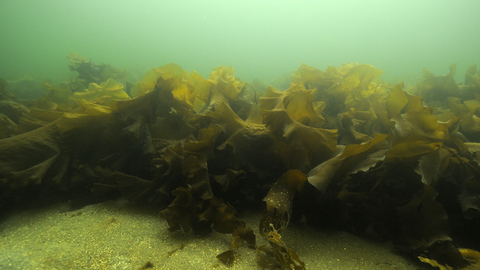
Sugar kelp ©Keith Hiscock
Sugar kelp
Enw gwyddonol: Saccharina latissima
Sugar kelp is the crinkly belt like kelp that can often be found in deep rockpools on the lower shore or washed up on the beach after rough seas.
Species information
Ystadegau
Length: up to 5m Frond width: over 15cmStatws cadwraethol
Common
